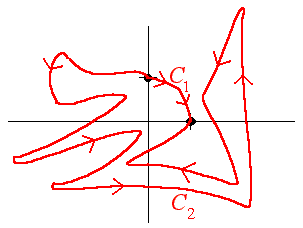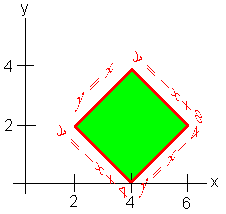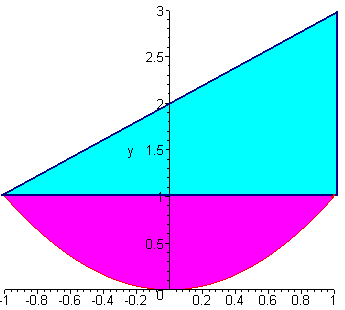Drawing graphs
Main article: Graph drawing
Graphs are represented graphically by drawing a dot for every vertex, and drawing an arc between two vertices if they are connected by an edge. If the graph is directed, the direction is indicated by drawing an arrow.A graph drawing should not be confused with the graph itself (the abstract, non-visual structure) as there are several ways to structure the graph drawing. All that matters is which vertices are connected to which others by how many edges and not the exact layout. In practice it is often difficult to decide if two drawings represent the same graph. Depending on the problem domain some layouts may be better suited and easier to understand than others.
Graph-theoretic data structures
Main article: Graph (data structure)
There are different ways to store graphs in a computer system. The data structure used depends on both the graph structure and the algorithm used for manipulating the graph. Theoretically one can distinguish between list and matrix structures but in concrete applications the best structure is often a combination of both. List structures are often preferred for sparse graphs as they have smaller memory requirements. Matrix structures on the other hand provide faster access for some applications but can consume huge amounts of memory.List structures
- Incidence list
- The edges are represented by an array containing pairs (tuples if directed) of vertices (that the edge connects) and possibly weight and other data. Vertices connected by an edge are said to be adjacent.
- Adjacency list
- Much like the incidence list, each vertex has a list of which vertices it is adjacent to. This causes redundancy in an undirected graph: for example, if vertices A and B are adjacent, A's adjacency list contains B, while B's list contains A. Adjacency queries are faster, at the cost of extra storage space.
Matrix structures
- Incidence matrix
- The graph is represented by a matrix of size |V| (number of vertices) by |E| (number of edges) where the entry [vertex, edge] contains the edge's endpoint data (simplest case: 1 - incident, 0 - not incident).
- Adjacency matrix
- This is an n by n matrix A, where n is the number of vertices in the graph. If there is an edge from a vertex x to a vertex y, then the element ax,y is 1 (or in general the number of xy edges), otherwise it is 0. In computing, this matrix makes it easy to find subgraphs, and to reverse a directed graph.
- Laplacian matrix or Kirchhoff matrix or Admittance matrix
- This is defined as D − A, where D is the diagonal degree matrix. It explicitly contains both adjacency information and degree information. (However, there are other, similar matrices that are also called "Laplacian matrices" of a graph.)
- Distance matrix
- A symmetric n by n matrix D whose element dx,y is the length of a shortest path between x and y; if there is no such path dx,y = infinity. It can be derived from powers of A
![d_{x,y}=\min\{n\mid A^n[x,y]\ne 0\}. \,](http://upload.wikimedia.org/math/b/8/1/b8115a468b15e0c1b352c92574573415.png)
Problems in graph theory
Enumeration
There is a large literature on graphical enumeration: the problem of counting graphs meeting specified conditions. Some of this work is found in Harary and Palmer (1973).Subgraphs, induced subgraphs, and minors
A common problem, called the subgraph isomorphism problem, is finding a fixed graph as a subgraph in a given graph. One reason to be interested in such a question is that many graph properties are hereditary for subgraphs, which means that a graph has the property if and only if all subgraphs have it too. Unfortunately, finding maximal subgraphs of a certain kind is often an NP-complete problem.- Finding the largest complete graph is called the clique problem (NP-complete).
- Finding the largest edgeless induced subgraph, or independent set, called the independent set problem (NP-complete).
- A graph is planar if it contains as a minor neither the complete bipartite graph K3,3 (See the Three-cottage problem) nor the complete graph K5.











